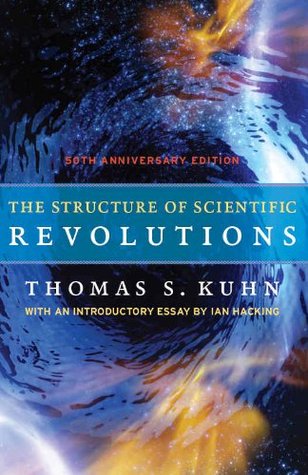More on this book
Community
Kindle Notes & Highlights
Read between
December 10, 2018 - May 16, 2019
How could history of science fail to be a source of phenomena to which theories about knowledge may legitimately be asked to apply?
They were able to do so because they shared two essential characteristics. Their achievement was sufficiently unprecedented to attract an enduring group of adherents away from competing modes of scientific activity. Simultaneously, it was sufficiently open-ended to leave all sorts of problems for the redefined group of practitioners to resolve.
Each of the corresponding schools derived strength from its relation to some particular metaphysic, and each emphasized, as paradigmatic observations, the particular cluster of optical phenomena that its own theory could do most to explain.
Few people who are not actually practitioners of a mature science realize how much mop-up work of this sort a paradigm leaves to be done
By focusing attention upon a small range of relatively esoteric problems, the paradigm forces scientists to investigate some part of nature in a detail and depth that would otherwise be unimaginable.
A paradigm can, for that matter, even insulate the community from those socially important problems that are not reducible to the puzzle form, because they cannot be stated in terms of the conceptual and instrumental tools the paradigm supplies. Such problems can be a distraction, a lesson brilliantly illustrated by several facets of seventeenth-century Baconianism and by some of the contemporary social sciences. One of the reasons why normal science seems to progress so rapidly is that its practitioners concentrate on problems that only their own lack of ingenuity should keep them from
...more
What then challenges him is the conviction that, if only he is skilful enough, he will succeed in solving a puzzle that no one before has solved or solved so well.
Rules, I suggest, derive from paradigms, but paradigms can guide research even in the absence of rules.
the solution to each of them had been at least partially anticipated during a period when there was no crisis in the corresponding science; and in the absence of crisis those anticipations had been ignored.
But surely one reason why the theories of combustion by absorption from the atmosphere—theories developed in the seventeenth century by Rey, Hooke, and Mayow—failed to get a sufficient hearing was that they made no contact with a recognized trouble spot in normal scientific practice.
They do not, that is, treat anomalies as counterinstances, though in the vocabulary of philosophy of science that is what they are.
Though history is unlikely to record their names, some men have undoubtedly been driven to desert science because of their inability to tolerate crisis.
Once a first paradigm through which to view nature has been found, there is no such thing as research in the absence of any paradigm. To reject one paradigm without simultaneously substituting another is to reject science itself.


